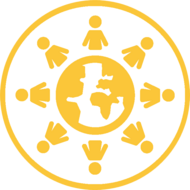(View Complete Item Description)
Students work in groups to examine excerpts from primary source documents. They identify social and economic factors affecting specific categories of people when the Great Migration accelerated in 1916 to 1917: black migrant workers from the South, southern planters, southern small-farm farmers, northern industrialists, agents, and white immigrant workers in the North. Each student group creates a "perspectives page" to post for a gallery walk where students analyze the causes of the Great Migration and the changes it brought to both the North and South. Students also discuss the specific economic factors that influenced the Great Migration: scarcity, supply, demand, surplus, shortage, and opportunity cost. Using the PACED decisionmaking model, they analyze the alternatives and criteria of potential migrants.
Material Type:
Activity/Lab,
Lesson,
Lesson Plan
Author:
Eva Johnston



















